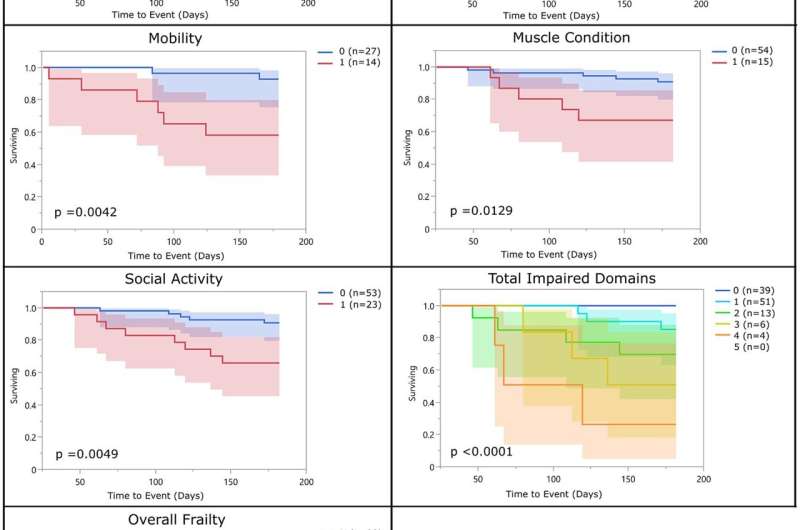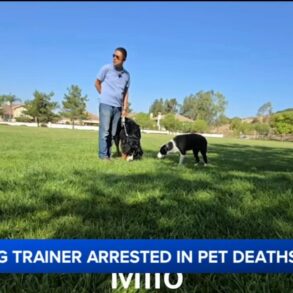
Researchers from North Carolina State University have developed a tool that can aid owners and veterinarians in assessing an elderly dog’s frailty. The tool—when coupled with simple assessments of body and muscle condition by the veterinarian—can predict likelihood of short-term (within six months) mortality and provide important data to owners faced with treatment and quality-of-life decisions for their aging dogs.
The study is published in the journal Frontiers in Veterinary Science.
“In humans, we classify frailty as a physical or physiological state associated with loss of strength, slow walking speed, weight loss, exhaustion and reduced activity—which is what happens as your body starts winding down,” says Natasha Olby, Dr. Kady M. Gjessing and Rahna M. Davidson Distinguished Chair in Gerontology at NC State.
“In humans, frailty correlates with disability and mortality, and we have tools for assessing frailty in humans. However, this is an emerging field in dogs and there is a need for screening tools that can be applied easily.”
Olby is the primary investigator for NC State’s canine neuro-aging program, which seeks to understand the mechanisms involved in the canine aging process.
“We were motivated to develop a frailty phenotype, or set of common characteristics, in part because we think frailty may be altering outcomes for some of the dogs in our clinical trials,” Olby says. “The other motivation is that we see frail dogs every day—and the condition is not well-described.
“One of the most common questions veterinarians receive from owners trying to decide on treatments for elderly dogs is, “How long will my dog live?'” Olby says. “If we could develop a phenotype that is reasonably predictive of short-term mortality, it could be helpful for owners who are faced with treatment decisions.”
The researchers developed a frailty screening questionnaire that asked owners questions about their dog’s nutrition status (which included overall body condition and appetite), exhaustion/energy level, mobility, muscle condition and social activity. These five “domains” are also used in human frailty assessments.
They then validated the tool against two dog populations: 39 dogs that were current participants in Olby’s neuro-aging study, and 198 dogs aged 10 years and older who were not enrolled in the neuro-aging study.
Dogs that were classified as impaired in three of the five domains were considered frail and were twice as likely to die within six months as dogs that were not frail.
“Of course, the reality is that you never really know how long a dog will live, but this questionnaire coupled with body and muscle condition scores is good at predicting six-month mortality,” Olby says. “And it is an easily deployable screening tool that doesn’t require any lab work—a veterinarian can assess body and muscle condition with simple palpation.”
The researchers are hopeful that this screening tool will lead to more complete phenotypes for canine frailty.
“It is definitely still a work in progress, but this screen is a simple tool that owners and veterinarians can use as a starting place for discussing care options for elderly dogs,” Olby says.
More information:
Katharine J. Russell et al, Establishing a clinically applicable frailty phenotype screening tool for aging dogs, Frontiers in Veterinary Science (2024). DOI: 10.3389/fvets.2024.1335463
Provided by
North Carolina State University
Citation:
New tool can assess elderly dogs’ frailty (2024, September 30)
retrieved 30 September 2024
from https://phys.org/news/2024-09-tool-elderly-dogs-frailty.html
This document is subject to copyright. Apart from any fair dealing for the purpose of private study or research, no
part may be reproduced without the written permission. The content is provided for information purposes only.
This post was originally published on this site be sure to check out more of their content.












































